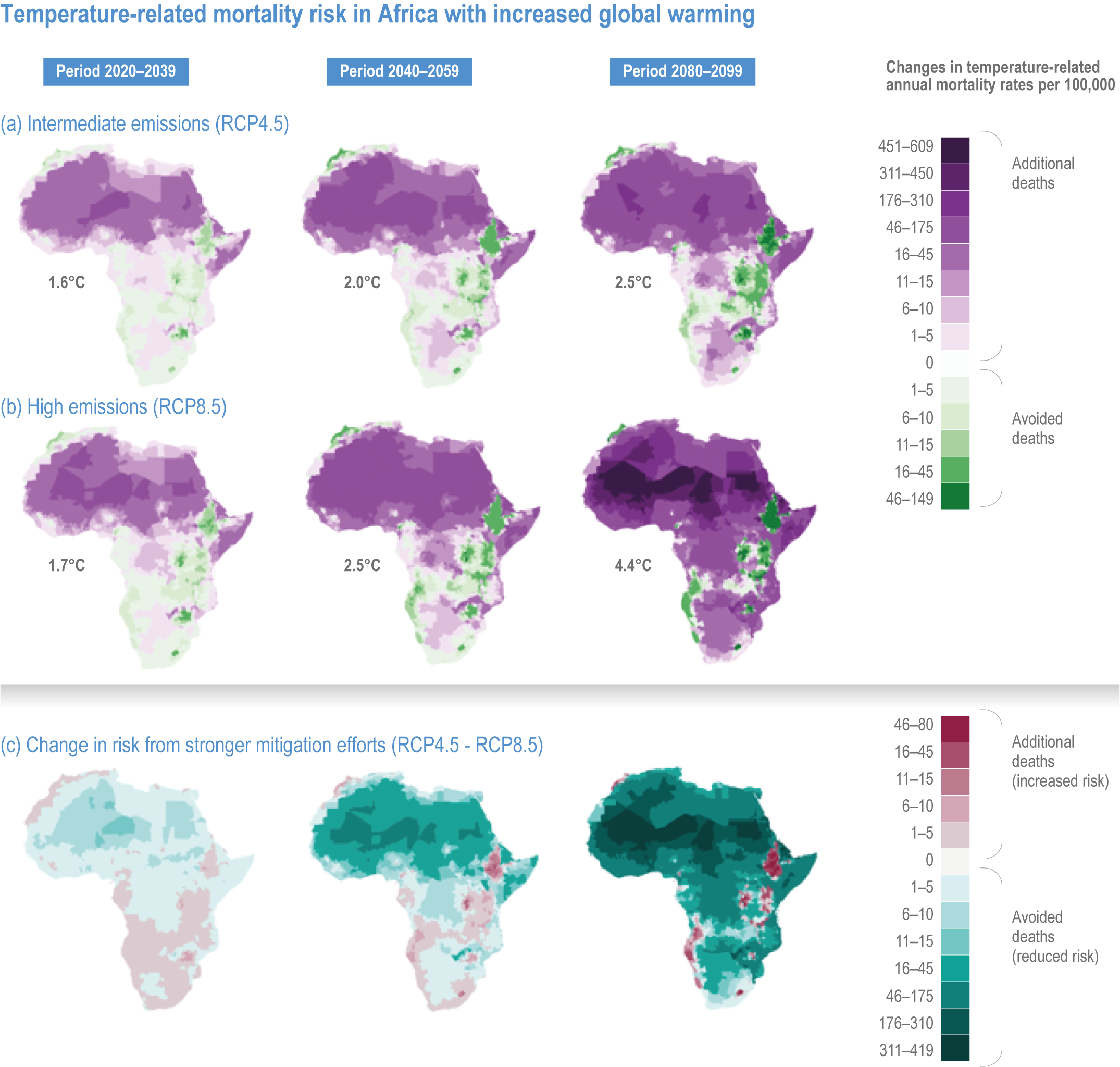Figure 9.35
Figure caption
Figure 9.35 | Projected temperature-related mortality risk in Africa with increasing global warming. Maps show changes in mortality rates in deaths per 100,000 for global warming in the years 2020–2039, 2040–2059 and 2080–2099 for
(a) intermediate emissions scenario (RCP 4.5);
(b) a high emissions scenario (RCP 8.5); and
(c) showing avoidable deaths due to increased emissions mitigation efforts to achieve a lower global warming level (RCP4.5 rather than RCP8.5). These estimates of climate change impacts on mortality rates include temperature-related impacts only. They account for the benefits of income growth and incremental adaptation to climate change, both of which reduce mortality sensitivity to extreme temperatures. Projections were based on income and demographics from Shared Socioeconomic Pathway 3 (SSP3), with future adaptation based on adaptation actions observed in the global historical record. The estimates do not include the costs of the behaviours and investments required to achieve such adaptation (Carleton et al., 2018). Areas shown in burgundy in (c) have fewer deaths due to temperature under RCP8.5 than RCP4.5. This is because cold is currently the greatest driver of temperature-related deaths in these areas, which is projected to be alleviated with increasing levels of global warming (Zhao et al., 2021).
